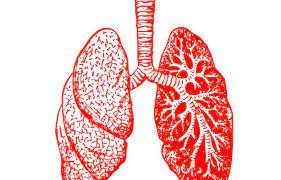Pulmonary embolism, often abbreviated as PE, is a critical medical condition that occurs when a blood clot forms in one of the pulmonary arteries in the lungs. This blockage can lead to serious complications, making it essential to understand the symptoms, causes, diagnosis, treatment, and prevention of pulmonary embolism.
Understanding Pulmonary Embolism
Recognizing the Symptoms
The symptoms of pulmonary embolism can vary widely, making it challenging to diagnose. Common signs include sudden shortness of breath, sharp chest pain that worsens with deep breaths, rapid heart rate, coughing, and even coughing up blood. Other symptoms may include leg swelling, excessive sweating, and lightheadedness.
Exploring the Causes
Pulmonary embolism is primarily caused by blood clots that travel to the lungs from other parts of the body, most commonly from deep veins in the legs, a condition known as deep vein thrombosis (DVT). These clots can obstruct blood flow and damage lung tissue. Various factors contribute to the formation of these clots, including prolonged immobility, surgery, obesity, smoking, and certain medical conditions like cancer and heart diseases.
Diagnosing Pulmonary Embolism
Medical Examination and History
When a patient exhibits symptoms of pulmonary embolism, a medical professional will start by conducting a thorough physical examination and reviewing the patient’s medical history. This initial assessment helps in determining the risk factors and likelihood of a pulmonary embolism.
Diagnostic Tests
Several diagnostic tests are utilized to confirm the presence of a pulmonary embolism. These include a D-dimer blood test, which measures the presence of blood clot fragments, and imaging tests such as a chest CT angiography or a ventilation-perfusion scan. These tests help visualize blood flow in the lungs and identify any blockages.
Treating and Preventing Pulmonary Embolism
Immediate Treatment
If a pulmonary embolism is confirmed, immediate medical intervention is necessary. Treatment often involves anticoagulant medications, also known as blood thinners, which prevent the growth of existing blood clots and the formation of new ones. In severe cases, clot-dissolving medications or surgical procedures may be required to remove the clot.
Long-term Management and Prevention
Once treated, it’s important to manage and prevent future occurrences of pulmonary embolism. This may involve continuing anticoagulant therapy, making lifestyle changes such as quitting smoking and maintaining a healthy weight, staying physically active to improve circulation, and wearing compression stockings to prevent leg clots.
Conclusion
In conclusion, pulmonary embolism is a serious medical condition that can lead to life-threatening complications if not promptly diagnosed and treated. Being aware of the symptoms, understanding the causes, seeking medical attention, and following preventive measures are crucial steps in ensuring your lung health and overall well-being.








